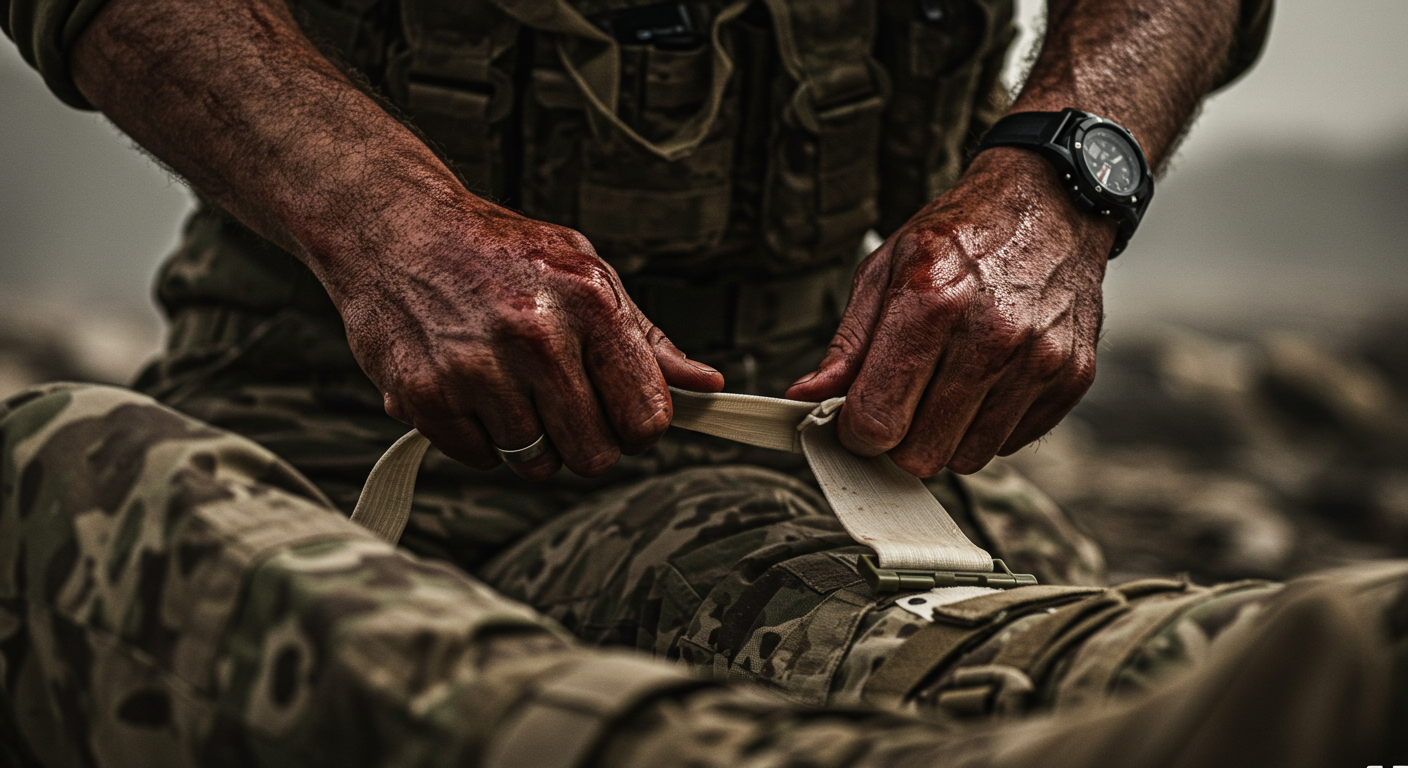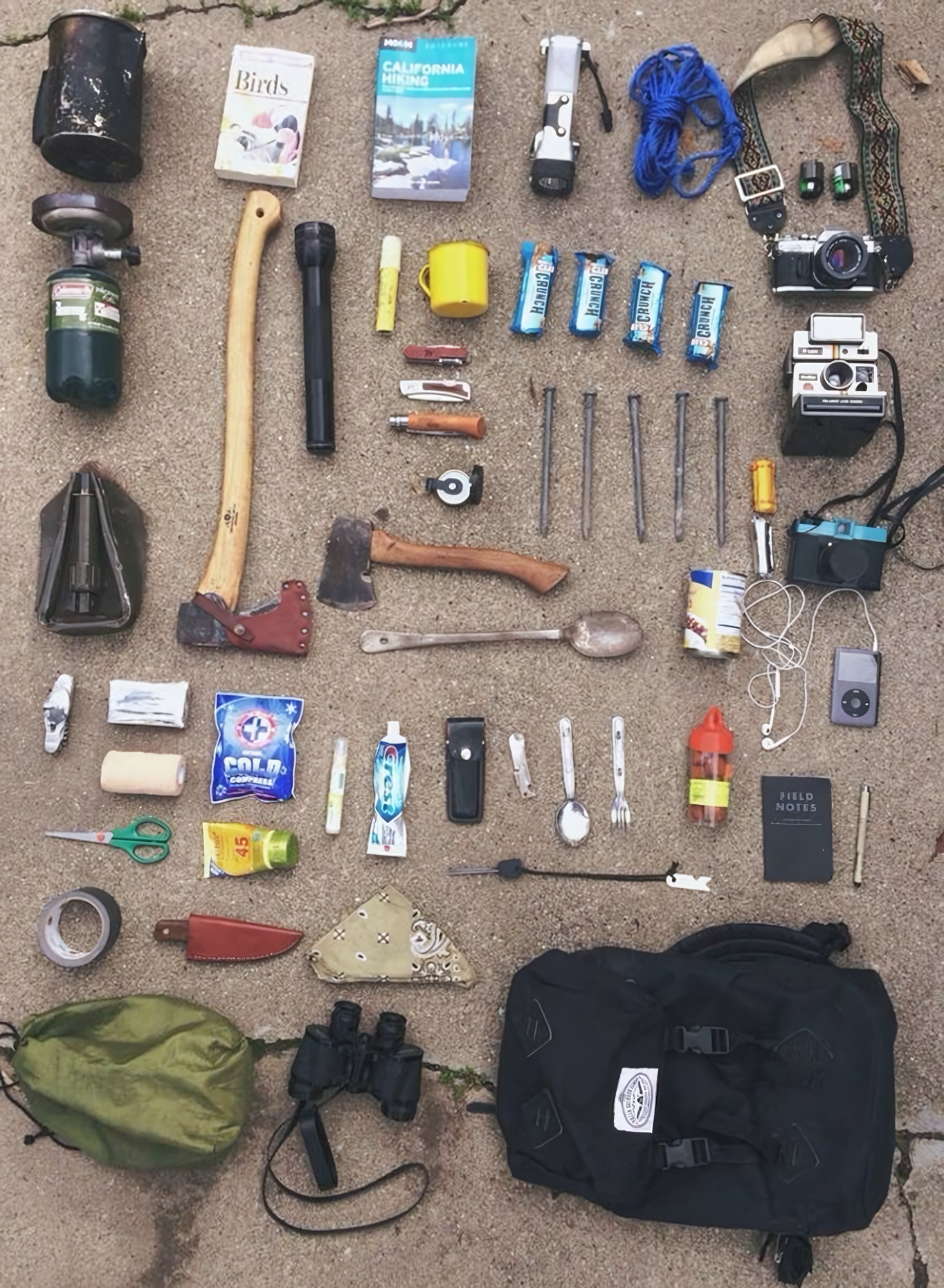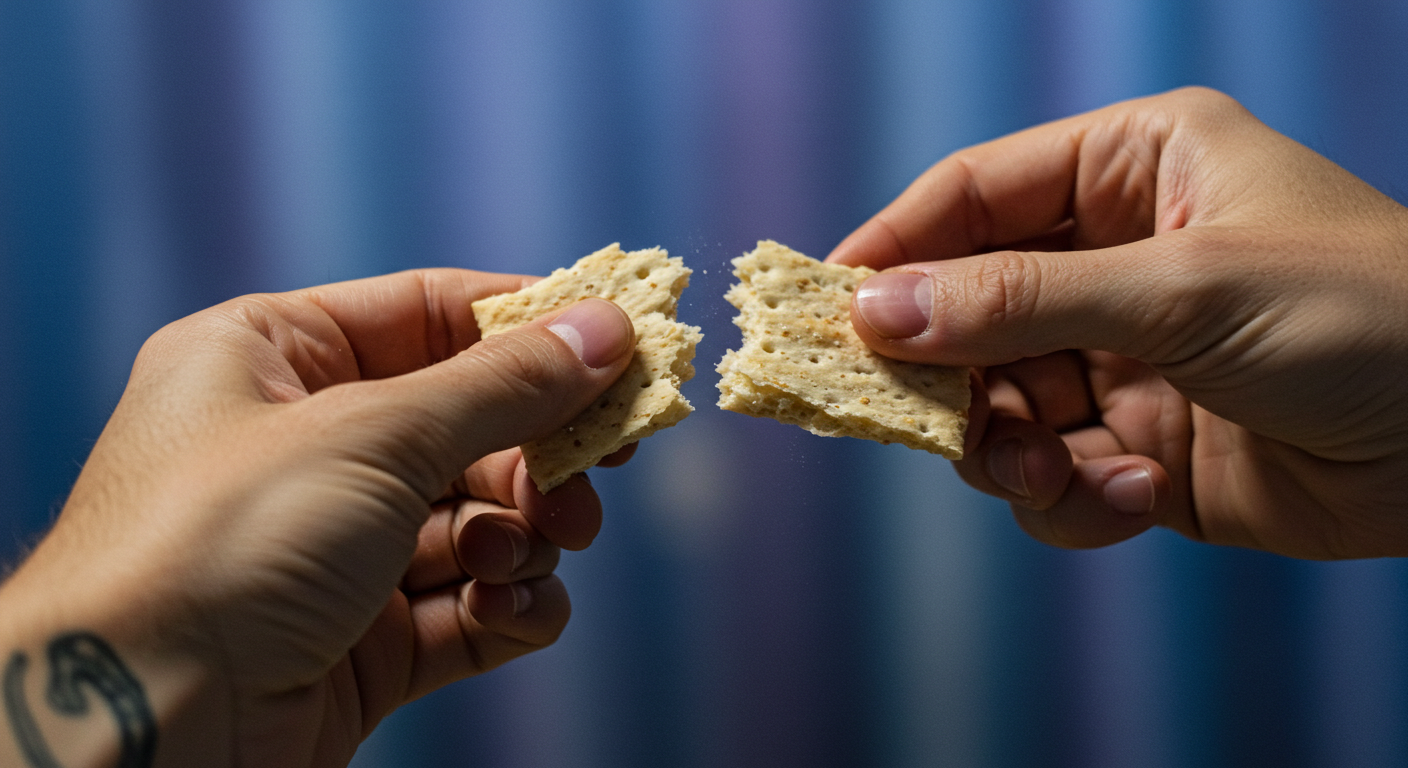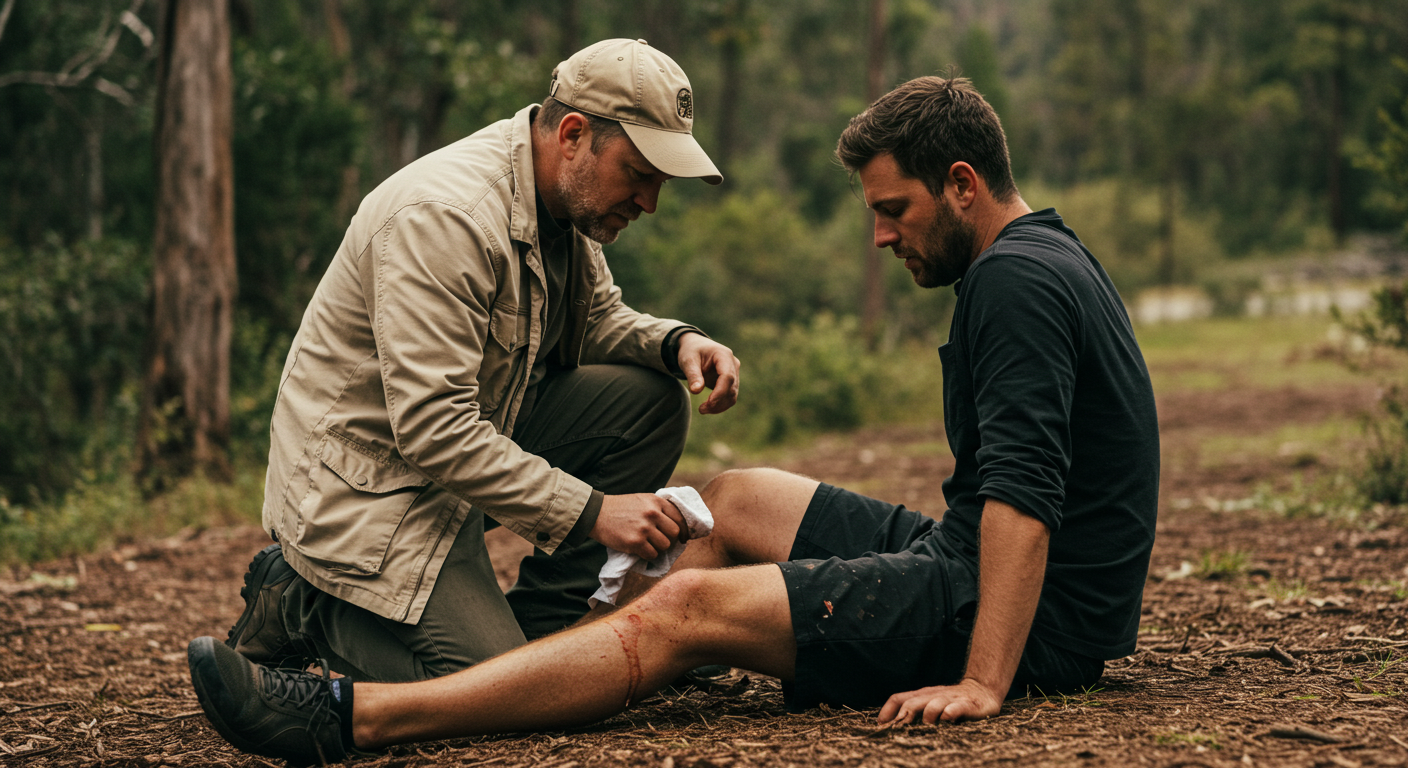When things go wrong and you’re far from a hospital, with no ambulance on the way, you’re left with your instincts, your prep, and your grit. What separates those who survive from those who don’t isn’t always luck—it’s knowledge.
This article is for informational purposes only and is not a substitute for professional medical training. Always seek out certified first-aid and trauma response courses to be truly prepared.
The Combat Medic’s Advantage
A combat medic knows things that most people don’t. This wisdom, honed in the world’s most extreme environments, could mean the difference between life and death in a post-collapse world. Their training is based on a brutal reality: resources are limited, time is short, and every decision is critical.
1. Stopping Arterial Bleeding Without a Tourniquet
Arterial bleeding is fast and deadly. Bright red blood spurts with every heartbeat, and someone can bleed out in minutes. While a commercial tourniquet like the CAT is ideal, you might not have that luxury in a grid-down situation.
- Improvised Tourniquets: Use a strong strip of cloth, a belt, a backpack strap, or a bra strap. Tie it a few inches above the wound—never directly on a joint—and crank it down tight with a stick or a similar object until the bleeding stops.
- Wound Packing: If a tourniquet isn’t an option or the bleeding persists, use clean cloth, gauze, or even a tampon to pack the wound. Shove it deep into the source of the bleeding and apply firm, direct pressure. This is a life-saving technique that works by creating pressure directly on the damaged blood vessel.
- Mark the Time: Always mark the time a tourniquet was applied. Reassess every few minutes, and if bleeding resumes, tighten it again. Remember, it’s better to lose a limb than to bleed to death.
2. The Six-Hour Golden Rule of Wound Care
In a survival scenario, infection is the silent killer. A minor cut can become deadly without proper care. A combat medic knows that you have a crucial window to act.
- Clean Within Six Hours: Clean a wound thoroughly within the first six hours. After that, bacteria begins to multiply, and the risk of infection skyrockets. Use boiled and cooled water to flush the area. Pure water is essential; any contaminants can make a minor wound much worse.
- Remove Debris: Scrub out any dirt or debris using a sterilized tool. Yes, it will be painful, but it’s far better than sepsis. If you have antiseptics like iodine or Betadine, use them.
- Know When to Close: If the wound edges are clean and bleeding has stopped, you can close it with sutures, medical strips, or skin glue. Never close a dirty or contaminated wound. You’ll trap bacteria inside. For ragged or dirty wounds, leave them open and clean them daily until they show signs of healing.
3. Why You Should Never Remove an Embedded Object
It’s a common instinct to pull out a piece of glass, a shard of metal, or a bullet. Don’t do it. That object could be acting as a plug for a damaged artery. Removing it could cause the patient to bleed out in seconds.
- Stabilize, Don’t Remove: Instead of pulling it out, stabilize the object. Use gauze, tape, or cloth to build a sturdy padding around it, then wrap it snugly to prevent any movement.
- Focus on Bleeding Control: Focus on controlling the external bleeding and preventing further damage. Move the injured person as carefully as possible to avoid dislodging the object.
4. The Brutal Necessity of Triage
In a true crisis with limited supplies, a combat medic knows that triage is a brutal but necessary process. You have to decide who lives and who doesn’t.
- Prioritize the Savable: Don’t waste precious time and resources on someone who is pulseless, not breathing, and has suffered major, unsurvivable trauma. If you spend your time trying to resuscitate them, others who could have been saved may die while they wait.
- Make Hard Choices: Prioritize those who are conscious, breathing, and have bleeding you can control. Even if it feels heartless, saving one life instead of losing three is sometimes the only choice.
5. Cleanliness Is Survival
In a post-collapse world, infection is the silent killer. A simple cut can become deadly without proper hygiene.
- Practice Strict Hygiene: Wash your hands thoroughly before treating anyone. If no soap is available, use hand sanitizer or alcohol. Boil tools before and after use. If you have to reuse bandages, boil them first.
- Create a Clean Station: Set up a clean station for treating wounds, using a tarp or cloth as a barrier. Wear gloves if you have them. If not, use sandwich bags or wrap your hands in plastic. Keep wounds dry and change dressings daily. Never ignore signs of infection like swelling, redness, or discharge.
6. How to Spot a Deadly Infection Without Labs
You won’t have blood tests in the field. You’ll have to rely on what you see and smell. Signs of a serious infection include:
- Redness that spreads from the wound.
- Swelling and heat around the injury.
- Foul-smelling drainage.
- Fever, chills, or sweating.
- Red streaks moving up the limb (a sign of blood poisoning).
- Mental confusion, which can indicate sepsis.
If you see any of these, act fast. Flush the wound, remove dead tissue, and if you have antibiotics, start them immediately. Keep the person warm and hydrated. Recognizing these symptoms might be the only thing standing between life and death.
7. What Pain (and Silence) Really Means
A person who is screaming in pain is usually stable—their nervous system is still functioning. But if someone suddenly goes quiet, becomes glassy-eyed, or unresponsive, that’s a major red flag. They may be going into shock or suffering from internal injuries.
- Signs of Shock: Watch for shallow breathing, a weak or rapid pulse, pale or bluish skin, and confusion.
- Treat for Shock: Keep the person warm, elevate their legs (unless there’s head or spine trauma), and comfort them until help arrives or until you can take the next step.
8. Suture Secrets That Actually Work
Suturing isn’t as simple as poking a needle through the skin. Done wrong, it can trap infection or tear the wound further.
- Clean Before You Close: Clean the wound thoroughly before you close it. Sterilize your needle and thread by boiling or using a flame.
- Proper Technique: Use a curved needle if possible. Space stitches close enough to bring the edges together without puckering.
- Know When to Skip It: Only suture wounds that are clean, under six hours old, and not jagged. Never close animal bites, deep punctures, or abscesses. For those, leave the wound open, packed with clean gauze, and flush it daily.
- Alternatives: For minor cuts, butterfly bandages and super glue can work. Duct tape, in a pinch, can also keep a wound closed temporarily.
9. Efficient Natural Alternatives
When your first-aid kit runs dry, nature becomes your pharmacy. Many natural remedies, used for thousands of years, can still work today if you know how to use them.
- Honey: Raw, unfiltered honey is a natural antibacterial. Spread it over a clean wound to keep it moist while blocking contaminants.
- Yarrow: Found in fields, yarrow has a long history of battlefield use. Chew the leaves to activate their clotting agents, then press the mass into a bleeding cut.
- Plantain: This broadleaf weed is great for pulling out toxins. Crush the leaves and place them on insect bites or minor wounds.
- Pine Sap: The sticky sap from a pine tree is a natural antiseptic. Apply it to small wounds to seal and disinfect them.
A field guide to medicinal plants is one of the most underrated survival tools. Knowing how to identify and use these natural allies could be the difference between infection and healing.
10. Know Your Limits—and When to Ask for Help
Even the best-trained combat medic can’t save everyone alone. The key to survival is knowing your limits. Practice first aid regularly. Learn from EMT courses, military field manuals, and survival guides.
If you’re part of a survival group, make sure at least one person has deep medical knowledge. Train together. In a real emergency, teamwork saves lives.
You don’t have to be a combat medic to save a life—but knowing what they know could save yours. When the world goes dark and help isn’t coming, you’ll want to be the person others turn to—not the one waiting for a miracle. Learn now, practice often, and remember: in survival, knowledge is your best weapon.




